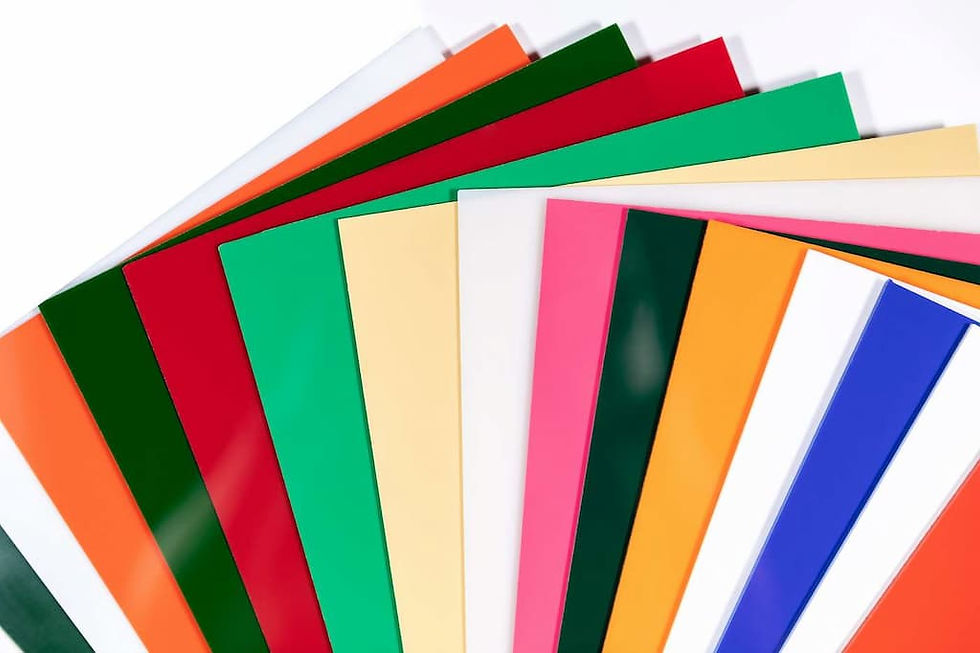Unleashing the Benefits of ABS Plastic Sheets in the Manufacturing Realm
- Evan Javier
- Sep 8
- 3 min read
Finding the perfect material for product construction or prototyping can be a seemingly endless pursuit. Are you in the manufacturing industry and struggling with the dilemma of choosing a durable, cost-effective, and easy-to-use material? Perhaps you are seeking a single solution that combines longevity, versatility, and cost-efficiency? One word for you: ABS plastic. This blog post will dive into the world of ABS plastic sheets and shed light on why they are becoming the material of choice in various manufacturing realms.

ABS plastic, to those unfamiliar, is an acronym for Acrylonitrile Butadiene Styrene. Don't be stumped by the technical jargon, because we will be making it all crystal clear by the end of this article. Starting with a simple introduction to the material itself, followed by an in-depth exploration of its applications and advantages, we'll help you understand why this material could be your secret ace in the manufacturing world. Lastly, we will balance our discussion by addressing some potential drawbacks. Read on to discover how ABS plastic sheets could revolutionize your manufacturing process.
What is ABS Plastic?
Understanding ABS plastic starts with its composition. It's a thermoplastic polymer, meaning it's easily mouldable under high temperature and solidifies on cooling. Curious about what makes ABS a go-to material for many manufacturers? Its unique features like toughness, glossiness and resistance to physical impacts and chemical corrosion make it appealing across industries. You'll often find ABS plastic sheet in industries like electronics, automotive, and consumer products. It’s a choice material for products that must withstand tough conditions and rough handling.
Why Choose ABS Plastic Sheets?
ABS plastic sheets are often chosen for their versatility. Due to their exceptional stability and ability to retain rigidity even in very low temperatures, they are able to take complex geometrical forms during the production process. Moreover, their glossy appearance is another attractive feature that draws manufacturers, promoting the aesthetic appeal of the finished product.
Next to versatility, its durability cannot be overlooked. ABS plastic sheets are tough, withstanding high physical impacts. They are abrasion-resistant, making them ideal for protective coverings.
Cost Implications
ABS plastics sheets are economical alternatives to other materials like metal, without compromising on quality. They deliver exceptional performance while saving the manufacturer costs in terms of raw materials, transportation (given their light weight), and even energy in some production processes.
Environmental Impact
ABS plastics, being a thermoplastic polymer, can be melted down and reshaped multiple times without significant material degradation. This recyclability aspect of ABS plastic sheets is integral to the push for responsible and sustainable manufacturing.
Potential Drawbacks
While ABS plastics boast numerous benefits, it's essential to address potential drawbacks as well. First off, while ABS can withstand physical impact, it is not as UV resistant as other alternatives, such as acrylic or polycarbonate. Furthermore, despite being recyclable, some environmental concerns persist surrounding plastic consumption and waste disposal.
Suitable Applications
Considering its properties and cost-effectiveness, industries that routinely use ABS plastic sheets include telecommunication, electrical appliances, automobile parts, and consumer products like kitchen appliances or toys.
Conclusion: The ABS Advantage
In conclusion, ABS plastic sheets prove to be an advantageous material choice in the manufacturing realm, with their versatility, durability, cost-effectiveness, and recyclability. Though there can be some drawbacks, these are significantly outweighed by the many benefits it brings to the table. It's time we reevaluated our material choices and consider the potential of ABS plastic sheets to redefine manufacturing processes.
.png)





Comments